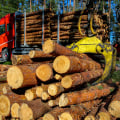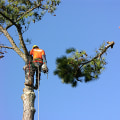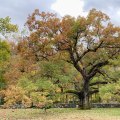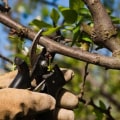When it comes to maintaining the health and aesthetics of trees, pruning is a critical task that should be approached with care and knowledge. However, not every part of a tree should be subjected to cutting. Understanding which parts should remain untouched is essential to ensure that the tree continues to thrive and contributes positively to the environment.
The Importance of Tree Pruning
Tree pruning serves multiple purposes, from removing dead or diseased branches to enhancing the tree's structure and encouraging healthy growth. It is also performed to ensure safety, particularly when branches pose a risk to nearby structures or people. However, improper pruning can lead to severe consequences, including the decline of the tree's health, structural weakness, and even premature death.
The Role of the Root System
One crucial part of the tree that should not be cut is the root system. The roots are vital for the tree's stability, nutrient absorption, and overall health. Cutting through major roots can destabilize the tree, making it susceptible to toppling during storms or strong winds. Additionally, root damage can hinder the tree's ability to absorb water and nutrients from the soil, leading to a slow decline in health. For this reason, it’s critical to avoid unnecessary digging or construction activities that could harm the roots, particularly the large anchoring roots that provide stability.
The Importance of the Trunk
The trunk is another essential part of the tree that should be left untouched. The trunk acts as the main support system, transporting water and nutrients from the roots to the branches and leaves. Cutting into the trunk can cause significant stress to the tree, creating wounds that can become entry points for diseases and pests. Moreover, any damage to the trunk can compromise the structural integrity of the tree, leading to potential hazards such as falling branches or even the entire tree toppling over. It is important to remember that while some light pruning may be necessary, the trunk should remain largely unscathed to maintain the tree's overall health and longevity.
Protecting the Branch Collar
One of the most common mistakes in tree pruning is cutting too close to the trunk, particularly around the branch collar. The branch collar is the swollen area at the base of a branch, where it connects to the trunk. This area is crucial for the tree’s ability to heal from pruning wounds. Cutting into the branch collar can prevent the tree from properly sealing off the wound, increasing the likelihood of disease and decay. When pruning, it’s important to make cuts just outside the branch collar, preserving this vital area and allowing the tree to heal more effectively.
The Canopy and Leaf Structure
Another critical area to protect during pruning is the tree's canopy and leaf structure. The leaves are responsible for photosynthesis, the process by which the tree produces energy. Over-pruning or removing too much of the canopy can severely affect the tree's ability to produce food, leading to weakened growth and increased vulnerability to diseases. It’s important to prune selectively, removing only the necessary branches to maintain the tree's shape and health without stripping away too much foliage.
Conclusion: The Art of Pruning
Tree pruning is as much an art as it is a science, requiring a deep understanding of the tree’s biology and growth patterns. To preserve the health and beauty of a tree, it is crucial to know which parts should not be cut, including the roots, trunk, branch collar, and a significant portion of the canopy. Over-pruning or improper cuts can lead to long-term damage, compromising the tree’s ability to thrive. Therefore, it’s often best to consult with professionals who understand the intricacies of tree care. For residents seeking expert tree care, local tree service in Decatur offers knowledgeable and reliable services, ensuring that trees are pruned correctly and remain healthy for years to come. By understanding and respecting the tree's natural structure, we can maintain their vitality and continue to enjoy their many benefits in our landscapes.






